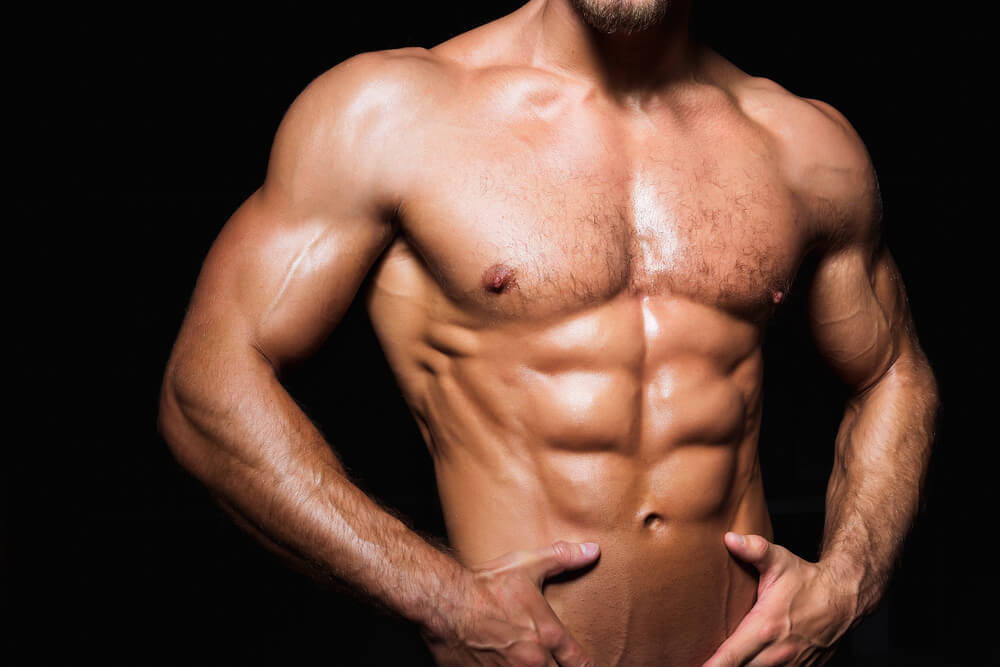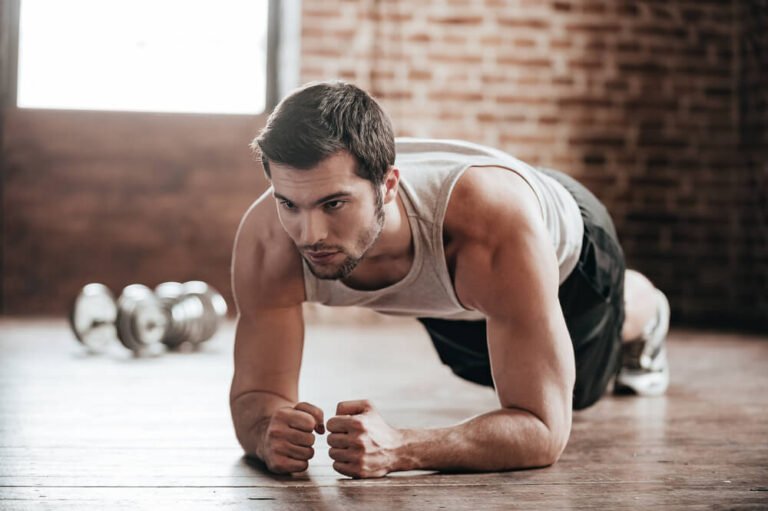
In the world of fitness, a strong core is undeniably the foundation of everything we do. Whether you’re participating in sports, lifting weights, or going about daily activities, a well-developed core enhances stability, balance, and overall strength. For those inspired by the powerlifter physique, understanding how to effectively train your abdominal muscles is key to achieving that powerful core and functionality.
In this blog post, we will explore the anatomy of the core, the importance of core strength for your overall fitness and performance, and provide you with a range of abdominal exercises suitable for all levels. We will also discuss how the powerlifter physique and a strong core are interconnected. Let’s get started!
The Importance of Core Strength
The core muscles include not just the abdominal muscles but also the muscles in your back, hips, and pelvis. This interconnected web of muscles provides stability and support to the entire body. Here are a few key reasons why building a strong core is essential:
- Improved Performance: A strong core is crucial for boosting your overall athletic performance. This is especially relevant for those aiming for a powerlifter physique, where stability and strength are paramount for executing lifts efficiently.
- Injury Prevention: A well-conditioned core helps protect your spine and reduces the risk of injuries. When the core is strong, it stabilizes your body during movements, thus preventing undue stress on other muscles and joints.
- Better Posture: Strengthening your core can lead to improved posture, reducing the potential for back pain and discomfort during daily activities.
- Enhanced Functional Fitness: Daily activities such as lifting, bending, or twisting become easier and safer when your core is strong.
- Aesthetic Appeal: For many, a strong core is synonymous with a toned and defined appearance. Achieving apowerlifter physique often involves some degree of abdominal development.
Understanding Your Core Muscles
To build a more effective core workout routine, it’s important to know the main muscle groups involved:
- Rectus Abdominis: Commonly referred to as the “abs,” this muscle plays a key role in flexing the spine and is visually prominent in a well-developed powerlifter physique.
- Obliques: Located on the sides of your abdomen, these muscles assist in rotation and lateral movements and help sculpt the waist.
- Transverse Abdominis: Often called the body’s natural weight belt, this deep muscle stabilizes the pelvis and spine.
- Erector Spinae: This group of muscles runs along your spine and is vital for back extension and posture.
- Hip Flexors: These muscles play a crucial role in pelvic stability and movement, supporting the core during lifts and other activities.
By understanding these muscles, you can focus your workouts on exercises that effectively target them all, enhancing your overall strength and contributing to a powerlifter physique.
Essential Core Exercises for All Levels
No matter what level you are in your fitness journey, incorporating a variety of core exercises will lead to the best results. Below are some recommended exercises, including variations for different stages of fitness.
- Plank Variations
Planks are one of the most effective core exercises, engaging multiple core muscles at once.
- Basic Plank:
- Get into a push-up position, resting on your forearms instead of your hands.
- Keep your body straight from head to heels and hold for 20-60 seconds.
- Side Plank:
- Lie on your side and prop yourself up on one forearm.
- Keep your body straight and hold for 20-40 seconds on each side.
- Plank with Shoulder Taps:
- In a basic plank position, alternate tapping each shoulder with the opposite hand while keeping your hips stable. This adds a level of difficulty and engages the stabilizing muscles.
- Dead Bug
The dead bug is an excellent exercise for core stability and coordination.
- How to Perform:
- Lie on your back with your arms extended towards the ceiling and your knees bent at a 90-degree angle.
- Slowly lower one arm and the opposite leg towards the floor while keeping your lower back pressed against the floor. Return to starting position and switch sides.
- Bicycle Crunches
Bicycle crunches effectively engage both the rectus abdominis and the obliques.
- How to Perform:
- Lie on your back and bring your knees up to a 90-degree angle.
- Place your hands behind your head and lift your shoulder blades off the ground.
- Alternate bringing one knee to your chest while extending the opposite leg, rotating your torso to touch your elbow to the opposite knee.
- Russian Twists
Russian twists are fantastic for targeting the obliques and improving rotational
- How to Perform:
- Sit on the ground with your knees bent and feet flat. Lean back slightly while keeping your back straight.
- Hold your hands together or use a weight (like a medicine ball) for added resistance.
- Rotate your torso to one side, then back to center, and twist to the other side. Keep your core engaged throughout the movement.
- Hanging Leg Raises
For those looking to significantly challenge their core, hanging leg raises are a fantastic option that engages the lower abs.
- How to Perform:
- Hang from a pull-up bar with an overhand grip.
- Keeping your legs straight, raise them towards your chest until your hips flex.
- Lower your legs back down gradually and repeat. For an easier variation, you can bend your knees as you raise your legs.
- Ab Wheel Rollouts
This exercise is commonly implemented by those aiming for a powerlifter physique, as it builds incredible core strength and stability.
- How to Perform:
- Kneel on the ground and hold an ab roller with both hands.
- Roll the wheel forward, extending your body until your chest is close to the ground, while keeping your core tight.
- Using your core, roll back to the starting position.
Building a strong core is essential for powerlifters and anyone looking to improve their overall fitness. Start with small rolls and increase your range of motion as you become stronger. Here are some core exercises to incorporate into your routine:
1. **Basic Plank**: Start by holding a plank position for 30-60 seconds, focusing on keeping your core engaged and your body in a straight line.
2. **Bicycle Crunches**: Lie on your back, lift your legs, and perform a bicycle motion with your legs while crunching up to touch your elbow to the opposite knee.
3. **Russian Twists**: Sit on the floor, lean back slightly, lift your feet off the ground, and twist your torso from side to side while holding a weight or medicine ball.
4. **Dead Bug**: Lie on your back with your arms extended towards the ceiling and legs in tabletop position. Lower one arm and the opposite leg towards the floor, then return to the starting position and switch sides.
5. **Hanging Leg Raises**: Hang from a pull-up bar and raise your legs towards your chest, focusing on using your core muscles to lift your legs.
6. **Ab Wheel Rollouts**: Kneel on the floor with your hands on an ab wheel or stability ball. Roll out as far as you can while maintaining a straight back, then pull yourself back to the starting position.
7. **Mountain Climbers**: Start in a plank position and quickly alternate bringing your knees towards your chest in a running motion.
8. **Cable Woodchoppers**: Attach a handle to a cable machine, stand sideways, and pull the cable down and across your body to work your obliques.
9. **Stability Ball Rollouts**: Kneel in front of a stability ball, place your forearms on top, and roll the ball forward while keeping your core engaged.
10. **Medicine Ball Slams**: Stand with your feet shoulder-width apart, hold a medicine ball overhead, and slam it down to the ground in front of you.
To structure your core workout routine, consider the following:
– Warm-up with dynamic stretches and light cardio.
– Perform a core circuit with exercises like planks, bicycle crunches, and Russian twists.
– Include strength segments like hanging leg raises and cable woodchoppers.
– Finish with high-intensity exercises like mountain climbers and medicine ball slams.
– Cool down with stretches and deep breathing exercises.
In addition to your workout routine, focus on nutrition by incorporating protein, healthy fats, and complex carbohydrates into your diet. Consistency and a structured approach will help you build a powerlifter physique and improve your overall performance in the gym.
Start building your core strength today and see the transformation in your physique and performance. Remember, a strong core is the foundation for success in powerlifting and overall fitness. With the rise of social media and the digital age, the way we consume news and information has drastically changed. Gone are the days of waiting for the newspaper to arrive on our doorstep or tuning in to the evening news on television. Now, we can access news from around the world at the touch of a button.
Social media platforms like Facebook, Twitter, and Instagram have become key players in the dissemination of news. With millions of users scrolling through their feeds every day, these platforms have become powerful tools for spreading information quickly and effectively. News organizations have adapted to this shift by utilizing social media to reach a wider audience and engage with readers in real-time.
However, the rise of social media as a news source has also raised concerns about the spread of misinformation and fake news. With the ease of sharing information online, it can be difficult to discern what is accurate and what is not. This has led to a growing distrust in traditional news sources and a rise in alternative news outlets that may not always adhere to journalistic standards.
Despite these challenges, social media has also brought about positive changes in the news industry. Citizen journalism has become more prevalent, with ordinary people capturing and sharing news events as they happen. This has led to a more diverse range of perspectives being represented in the media, giving a voice to those who may have been marginalized in the past.
Overall, social media has transformed the way we consume news, for better or for worse. As technology continues to evolve, it will be interesting to see how news organizations adapt to these changes and continue to provide reliable information to the public. Ultimately, it is up to us as consumers to be critical of the news we consume and to seek out reputable sources to stay informed.

